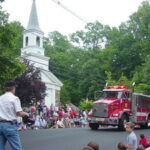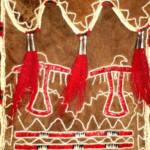Billerica is located in the Middlesex County of Massachusetts. It is approximately 24 miles NW of Boston. It is steeped in history, from being the site of one of the first praying Indian Villages in the nation, started by John Eliot, to the site of the oldest canal in the United States, home to the original Yankee Doodle, as well as many more.
1600’s-1700’s
In the early 1630’s, a praying Indian Village was started by John Eliot. It was comprised of more than a thousand men and was located near the Shawsheen River, near the present day Pinehurst section of town. Eliot also printed the first bible in America, which was actually printed in a Native American language.
In 1637, the General Court in England appointed Captain Jennison and Lieutenant Spooner to see if the area was fit for cultivation. In 1641, the land was granted to the city of Cambridge provided that they would make a village with ten families within ten years. Billerica, Massachusetts was originally a Kings Grant Tract and was incorporated in 1655. It received its name from settlers that were derived from Billericay in England. Billerica and Billericay are now sister cities.
In 1660, the first meeting-house in Billerica was built by a committee that included Ralph Hill Sr., George Farley and Jonathan Danforth. It was erected by John Parker. That year five men were chosen as selectmen.
In 1663 Ralph Hill Sr. donated the land for the South Burying Ground Cemetery that is located on the corner of French St. and Concord Rd. Many of Billerica’s prominent settlers and citizens are buried there including Zadok Howe, Jonathan Danforth, as well as Ralph Hill Sr.
The oldest homestead in Billerica that is still standing is the Manning Manse, built in 1696, by Samuel Manning. It is considered a “garrison house” because it was built to withstand Indian attacks. It was also the residence of William Manning, great grandson of Samuel Manning. William was the author of the “Key of Libberty”, which is said to be the first concrete suggestion for organizing the working-man in America. It is currently used as a restaurant.
1700’s-1800’s
Asa Pollard (1735-1775), was the first soldier to give his life at the Battle of Bunker Hill.
In 1940, King’s Corner Tavern, also known as Allen’s Tavern was built in East Billerica. It originally served as a stage coach stop for weary travelers and was later used to serve passengers on the Middlesex Canal.
Billerica Celebrates Yankee Doodle weekend every September. Thomas Ditson(1741-?),who was the source of the song, Yankee Doodle, was caught by the British trying to buy a gun.The original lyrics were a taunt by the British-
Yankee Doodle Went to Town
Just to Buy A Firelock
We will Tar and Feather Him
Just like we will John Hancock
Zadok Howe(1777-1851) was a prominent local physician. He donated funds to build the Howe School as an academy of higher learning
Billerica is also the site of the oldest canal in the United States, the Middlesex Canal, which was active in Billerica from 1795-1952. The canal was used to transport goods to and from Lowell, which earned it the moniker of the “Gateway to Lowell
In 1797, the Unitarian Universalist Church was incorporated in the center of town.
1800-1900’s
In 1852, The Howe School, which was designed by architect Daniel Bean, was built on Boston Road. It was donated by Zadok Howe as an academy of higher learning. It has recently been placed on the National Register of Historic Places.
In 1870, the North Billerica Baptist Church was built by Thomas Talbot at his own expense. He presented it as a gift to the Baptist society, as he found that the majority of the people in North Billerica as well as his employees were Baptist.
In 1880 the Bennett Library was built. It was donated by Eleanor Bennett and served as the town public library until 1979.
1900-2000
In 1915, the Howe High School was built as Billerica outgrew the old Howe High School, which was at the time the only school in town for higher learning.


